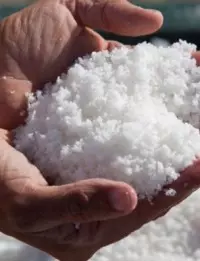
Salt and pepper: how to find the perfect balance?
The art of cooking relies on a multitude of details, and among them, salt and pepper play a major role. Indeed, these two pillars of the kitchen have the power to transform an ordinary dish into a true culinary experience.
To achieve this, it's necessary to know how to use and dose them with finesse, as they have an impact not only on taste but also on health.
The perfect dose of salt: sublimate without excess
Getting the right dose of salt
A genuine natural flavor enhancer, salt subtly reveals each of the flavors in a dish. It is important, however, to use it and use it in moderation, as it is powerful and can easily mask certain tastes.
Good salt dosing in a dish requires regular tasting of the preparation so as to add salt in small quantities if necessary and if the dish lacks it. It's always possible to add salt, but it's complicated to correct a dish that's too salty.
And don't forget to take into account the processed or highly salted foods in your recipe: broths, sauces and meats such as charcuterie have a high salt content. It is therefore advisable not to add more.
Choosing the right type of salt
Using a natural salt (and not a refined salt) allows you to enjoy all the natural benefits of salt (magnesium, potassium, calcium...) but also more subtle flavors and a crunchy texture. Sea salts, derived from the evaporation of seawater and produced by paludiers in salt marshes, are delicate, tasty natural salts with numerous benefits.
Choosing a variety of salts adds nuance to dishes. We choose them according to the tastes we wish to bring out, the type of recipe and we salt at different times of the preparation according to the salt used.
Fleur de sel, a true white treasure from the marshes, is ideal for sprinkling delicately over dishes at the end of cooking and according to individual tastes directly onto the plate. Its subtle flavor and slightly crunchy texture make it an exceptional delicacy that top chefs love to work with. It goes very well with all kinds of meats, fish and other dishes, and sublimates seasonal fruits and vegetables brilliantly, giving them plenty of depth.
Coarse salt, powerful and crunchy, is mainly used during cooking: on meat, vegetables, in cooking waters and can also stand alone for more original techniques such as cooking in a salt crust.
Milled sea salt is derived from ground dried coarse salt. It's practical, handy, very tasty and preserves the pleasure of natural, authentic sea salt. Ground sea salt is suitable for all uses and sublimates all dishes with delicacy.

Le Guérandais salts
All Le Guérandais salts are unrefined, unwashed and unbleached sea salts harvested by hand using ancestral techniques by the salt workers of the Guérande salt marshes.
How to dose pepper: a natural antioxidant
Getting the right amount of pepper
Pepper, with its characteristic spiciness, adds real depth to dishes. Like salt, it must be measured out carefully to avoid overshadowing other flavors. To measure it out properly, choose a quality whole-grain pepper and use a grinder for maximum freshness and to ensure you have precise control over the dosage.
Vary the types of pepper to suit your dishes. Black pepper is ideal for robust dishes, while white pepper goes well with more delicate sauces. Pink pepper, with its slightly sweet flavors, can be an interesting option for more creative dishes.
Pepper and its health benefits
In contrast to salt, which has many benefits but should be handled and consumed in moderation, pepper offers health benefits that are often overlooked. Pepper is a great source of antioxidants such as piperine. Antioxidants help prevent various diseases, including certain types of cancer and heart disease.
By regularly adding fresh pepper to your dishes, you can not only improve their taste, but also enjoy its many health benefits. Pepper is not, however, consumable in infinite quantities: too large quantities can in fact cause gastrointestinal irritation.
The perfect balance of salt and pepper
The key is therefore to find the perfect balance between salt and pepper in order to sublimate the flavors of the dish and adapt it to the tastes of your guests.
When measuring salt and pepper, take into account the other ingredients in your dish.
A dish rich in flavor requires fewer additions of condiments, while a lighter dish can easily be sublimated by lightly adding salt and pepper.
Tip: To rectify a dish that's too salty, add a touch of acidity. Lemon juice, for example, balances an overly salty dish very well.
In order to maintain a healthy balance between salt and pepper, explore other alternatives to enhance the flavor of your dishes. Fresh herbs, spices and aromatics will sublimate your dishes without sacrificing health, and allow you to replace or complement salt and pepper without going overboard.
In short, finding the perfect mix...
Finding the perfect dosage of salt and pepper is therefore a real matter of taste, but also of experience and awareness of the benefits and limitations of each, in order to benefit from their sublimating powers without jeopardizing one's health.




